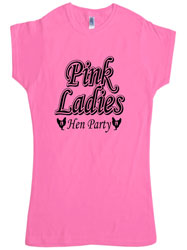T Shirt Printing Service Belfast

Vinyl printing produce perhaps the most durable custom printed tshirts of all the four main custom tshirt printing processes. Consequently, vinyl transfers are well suited to the production of custom work wear. A digitally-controlled cutter is used to cut a custom tshirt design from a vinyl sheet. This vinyl is then removed from its backing sheet and applied to the garment using a heat press. Vinyl is produced in a wide array of colours and is fantastic for simple solid colour designs. Placement is done by hand so vinyl transfer custom tshirt printing is not particularly well suited to designs with multiple colours or fiddly designs with small pieces such as logos or small writing
Vinyl printing is generally limited to simple text and designs. A single-colour print is the norm but we can overlay different colours of vinyl to produce some clever effects. The artwork is required in a vector format which is produced in a software package such as Adobe Illustrator or Corel Draw; this artwork format produces the design in lines as opposed to pixels as in a jpeg image.
Once the weeding has been done we are left with the design on its backing paper. We then transfer that onto the garment, this is done using an industrial heat press. This allows us to apply pressure and a temperature of 160c. Once this has been applied the backing paper is removed. It can be washed up to 60c without any colour loss, so can be a good option for work clothing that needs hot washes. Vinyl gives a smooth even finish with crisp edges, but can look like it has been stuck on compared to screen printing which absorbs into the fabric.
Submitting Artwork for Printing
Vector Files
This includes: Illustrator (.ai) or vector-based .pdf/.eps.
Vector files can be scaled and modified easily, without losing print quality. If someone else provides your artwork, it is always worth checking if this is available. Please note, taking raster art (see below) and placing it inside a vector file format does not make it a vector.
Raster Files / Image Files
This includes: .psd, .jpeg, .tiff, .png, .gif, .bmp.
Whichever of these formats you provide, the artwork should be at least print size and 300 dpi. If they are not provided this way, we cannot guarantee the print quality will match your original image.
Artwork file types that aren’t appropriate: Microsoft Word, PowerPoint or Publisher file types. Supplying these is likely to increase your turnaround time and will often require you to re-supply the artwork in an alternative format.